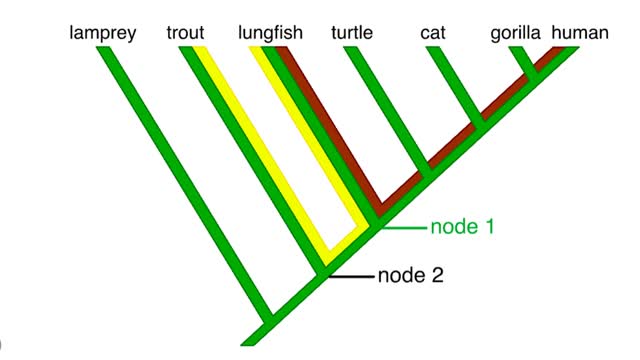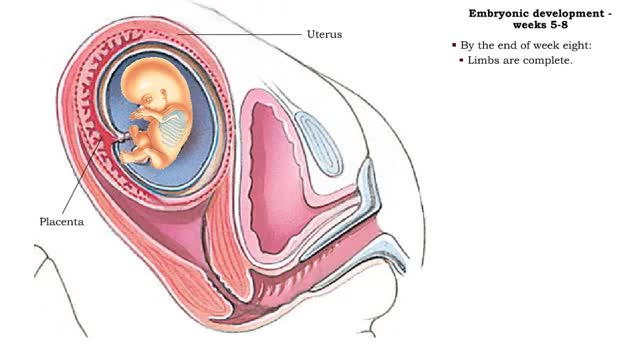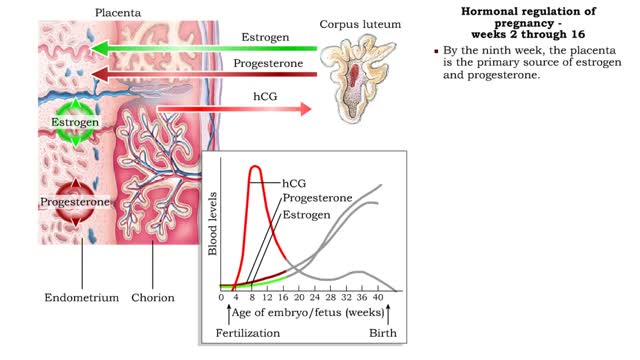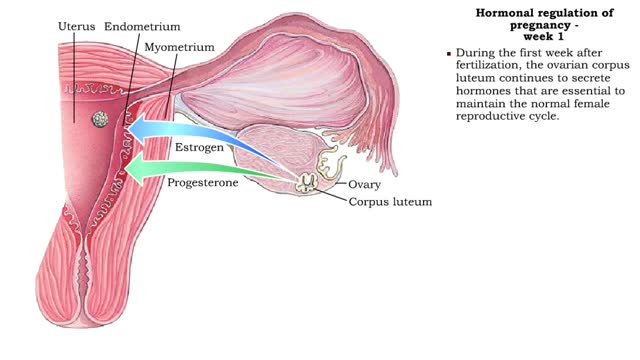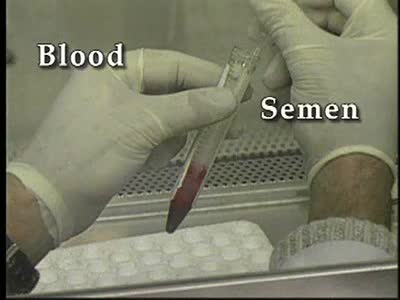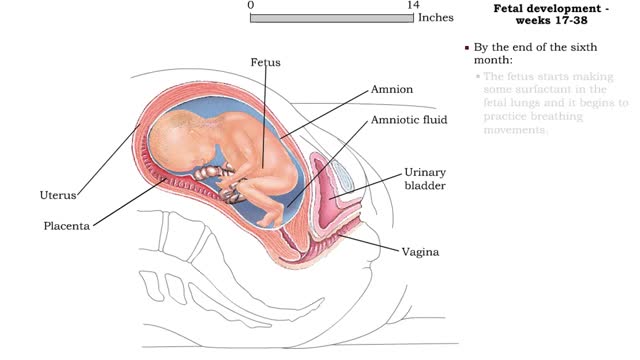Search Results
Results for: 'human body'
Interpreting a cladogram Animation
By: HWC, Views: 5170
Using a cladogram to determine relative relatedness and whether the lungfish is more closely related to a human or to a trout. To determine the relative relatedness, we begin by tracing the branches from the human and the lungfish to the point where they meet. We'll call this node 1. Now...
hGH (protein synthesis, growth and development)
By: HWC, Views: 11908
• Increased GHRH, a hypothalamic releasing hormone stimulated by low blood glucose, physical exertion, and increased sympathetic stimulation, stimulates the production of human growth hormone (hGH) from the somatotrophic cells of the anterior pituitary. • Human growth hormone targets cartil...
Embryonic development - Weeks 5 to 8
By: HWC, Views: 11663
• The second month of development is characterized by rapid development of the head and limbs as well as continued organogenesis. • During the fifth and sixth weeks growth of the brain, and therefore head, is rapid. • Hands and feets begin to form. • During week seven, even more deve...
The Hypothalamus: The Body's Thermostat (Human Thermostat)
By: HWC, Views: 10731
Normal body function requires a relatively constant body temperature, which is regulated by the body's thermostat, a region of the brain called the hypothalamus. The hypothalamus generates a temperature set point for the body and appears to be the major site for the integration of temperature inf...
Hormonal regulation of pregnancy - weeks 2 through 38
By: HWC, Views: 11982
Weeks 2 through 16 • During the first few months of pregnancy, estrogen and progesterone are secreted primarily by the corpus luteum. • These hormones act to maintain nutritional support for the embryo and fetus. • hCG production increases, peaking at 8 weeks. • hCG triggers the c...
Hormonal regulation of pregnancy - week 1
By: HWC, Views: 11869
• During pregnancy, hormones play a significant role in triggering changes in the mother and fetus. • Ormones : • Maintain the lining of the uterus and prevent menstruation. Prepare the mammary glands for lactation. • Increase flexibility of the pubic symphysis. • Affect the mot...
Introduction to Human Immunodeficiency Virus (HIV)
By: Administrator, Views: 14472
Human immunodeficiency virus gains entry into helper T cells, uses the cell DNA to replicate, interferes with normal function of the T cells, and destroys the normal cells. 1 in 10 persons with AIDS: age 50 or older. 4% of all AIDS cases: age 65 or older. AIDS’ main form of treatment: an...
Fetal development - Weeks 9 to 38
By: HWC, Views: 11729
Weeks 9-12 • Fetal development during the third month includes: • A large head, about 1/2 the length of the fetus. • Visible eyes and ears. • A detectable heartbeat. • Kidneys that form urine. • Gender identification. • Weak, undetectable body movements. • By the e...
Hormonal feedback loop components & Glucagon (glycogenolysis and gluconeogenesis)
By: HWC, Views: 11297
The endocrine system maintains many body conditions within normal limits with feedback loops. Each endocrine feedback loop maintains homeostasis using the following components: • Stimulus - a change in a body condition. • Production cell - an endocrine cell that produces a hormone after ...
Advertisement



